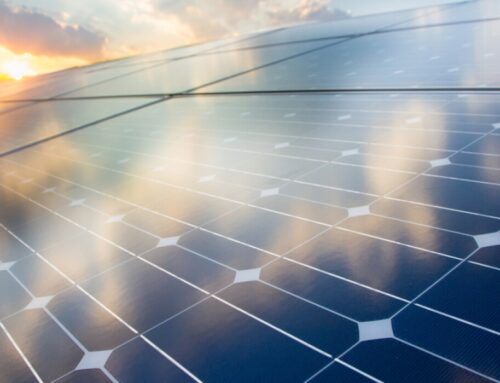EV Boom Pushes U.S. Clean Energy Investment to New High: $75B in Q3
November 26, 2025
Clean energy investment in the United States reached $75 billion in the third quarter of 2025, setting a new record. This is 9% higher than last quarter and 8% higher than the same time last year. The rise came mostly from spending on electric vehicles (EVs), home solar panels, and heat pumps.
This data comes from the Clean Investment Monitor (CIM). CIM tracks clean energy spending across the country. It covers more than 22,000 individual facilities, 5 million zero-emission vehicle registrations, 28 million heat pump sales, and 4.5 million distributed energy systems such as rooftop solar and home batteries. These numbers show the large scale of clean energy adoption in the U.S.
The CIM groups investment into three major segments:
-
Manufacturing: Building factories that make clean tech, such as batteries, solar panels, and EV components.
-
Energy and Industry: Utility-scale projects such as solar farms, wind farms, storage systems, and industrial decarbonization.
-
Retail: Consumer purchases, including EVs, rooftop solar, home batteries, and heat pumps.
The report covers technologies that qualify for the Inflation Reduction Act (IRA) tax incentives. This means the spending tracked is closely tied to U.S. climate policy and its effects on the market.
Electric Vehicles Lead the Growth
Electric vehicles were the main driver of the record investment. Of the $75 billion total, $41 billion came from the retail segment. Most of this came from EV purchases, which alone reached $31 billion. That is about 40–42% of all clean energy investment in the quarter.

EV spending grew 32% from last quarter and 30% from last year. A key reason was the expected end of federal EV tax credits in September 2025. Many buyers rushed to purchase vehicles before the deadline. Because the IRA includes EVs as eligible technologies, the tax credit played a direct role in the surge.
CIM calculates retail EV spending using state vehicle registration data and average vehicle prices (MSRP). This method gives a clearer picture of what consumers actually spend.
The jump in EV spending also reflects broader trends. Battery technology is getting better. More EV models are available. Charging networks are expanding. Prices are falling. These changes make EVs easier to buy and easier to use.
Trends Across Manufacturing and Utility-Scale Investment
Even with strong EV demand, the other sectors saw slower growth.
Manufacturing investment fell to $10 billion, a drop of 10% from the last quarter and 26% from last year. Most of this spending is still focused on the EV supply chain.

About $8 billion of manufacturing investment went to EV-related factories. Battery manufacturing alone reached $6 billion, but this was still down 23% from last quarter.
These numbers reflect challenges in large-scale production. High costs, material shortages, and longer permitting times slow project progress. CIM tracks manufacturing projects from the announcement, through groundbreaking, until operation. This helps separate what is promised from what is actually happening.
This matters because many projects do not become real investments. In industrial decarbonization, especially, only about $1 out of every $10 announced turns into real capital spending. In contrast, clean electricity and manufacturing have much higher rates of actual project completion.
Energy and Industry investment, which includes utility-scale solar, storage, and industrial decarbonization, reached $25 billion. That is 3% higher than last quarter and 15% higher than last year. Of that, $24 billion went to clean electricity generation.
Solar and storage were the main focus. Only $1 billion went to industrial decarbonization, showing slow progress in that area.

About $2 billion in projects were canceled across manufacturing and energy. Canceled projects point to the risks developers face, such as rising costs and long approval timelines.
How Policy Drives Investment
Government incentives played a major role in shaping Q3 investment. The expected end of the EV tax credit pushed many buyers to act. CIM tracks technologies supported by the IRA, which makes it clear how policy affects spending.
Strong state policies also played a part. Many states offer incentives for rooftop solar, home batteries, and energy-efficient appliances. These programs support the retail segment by lowering the cost for homeowners.
Stable and long-term policy is especially important for manufacturers and large project developers. They invest more when they know incentives will stay in place. This link between policy certainty and investment activity is seen across clean electricity, batteries, and industrial projects.
CIM’s Methods for Tracking Investment
CIM reports reflect actual dollars spent in the quarter, not future promises.
Manufacturing and energy projects are tracked through all phases, from planning to operation. Moreover, retail investments, such as EVs and solar panels, use direct sales figures, state vehicle registrations, and national-to-state scaling models.
Heat pump spending is estimated using national sales data downscaled to states based on climate and housing patterns. Distributed energy (like rooftop solar) uses installation counts and verified average system prices. This careful method helps produce reliable and detailed investment estimates.
U.S. Trends Align with Global Growth in Clean Energy
The U.S. growth fits into a global trend. In 2024, worldwide investment in the energy transition reached $2.1 trillion, an 11% increase from 2023. Electrified transport, like EVs and charging stations, was the biggest contributor. It drew about $757 billion worldwide.
The International Energy Agency predicts global energy investment will hit $3.3 trillion by 2025, led by China. Of that, $2.2 trillion will go to clean energy technologies. These figures show that the clean energy sector is growing fast around the world. However, investment levels often rely on national policies and incentives.

Global trends also show that improving technology, falling costs, and rising public awareness are driving adoption. Battery prices are falling. Renewable energy is getting more competitive. Also, governments have set bold carbon reduction goals. These factors together make clean energy projects more appealing to both consumers and investors.
What the Latest Data Means for Future Investment
The third-quarter data reveal several important trends in the clean energy sector. Consumer spending, particularly on EVs, is a powerful driver of growth. Policy incentives can boost investment for a while. However, to maintain long-term growth, there is a need for ongoing support and stable markets.
Manufacturing and industrial investments have been slower, reflecting challenges in production and scaling. Utility-scale projects like solar and energy storage are growing steadily. However, industrial decarbonization is still limited.
Worldwide, the trend matches that of the U.S. Transport and electricity generation draw the most investment.
A few key points summarize the main observations:
-
EVs and consumer clean technologies drove more than half of the total investment.
-
Manufacturing investments, especially in batteries, fell compared to previous quarters.
-
Utility-scale projects grew steadily, but at a slower pace.
-
Policy incentives strongly influenced spending patterns.
-
Global clean energy investment continues to rise, reinforcing U.S. trends.
The CIM data shows a clean energy market that is large, growing, and strongly influenced by policy. With clean technologies now making up nearly 5% of all private investment in major goods and structures, the sector is becoming a bigger part of the U.S. economy. Continued investment in manufacturing, industrial decarbonization, and clean electricity will help keep this momentum moving forward.
Search
RECENT PRESS RELEASES
Related Post



